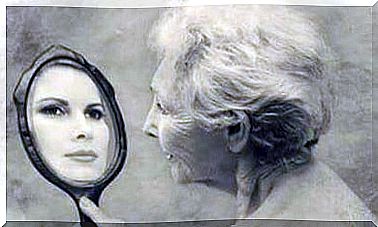What Is Vitrock Hypertension When Measuring Blood Pressure?

Vitrock hypertension during blood pressure measurement is when a person’s blood pressure is higher than normal when measured in a clinical setting (for example at the doctor’s office).
When the blood pressure is measured outside the hospital, however, it will return to its normal levels.
Vitrocks hypertension has been known for many years, but there are still some things with it that are unclear. Let us first look at some key concepts that will help us better understand this phenomenon:
What is blood pressure?
Blood pressure is the force that the blood exerts on the arterial walls. This pressure is a fundamental part of the blood circulation and provides oxygen and nutrition to all organs in the body. This allows the body to function properly.
Blood pressure has two components:
- Systolic blood pressure: The maximum value of blood pressure in systole (when the heart contracts). It refers to the effect of the pressure exerted on the walls of the blood vessels by the blood pumped from the heart.
- Diastolic blood pressure: The minimum value of blood pressure when the heart is in diastole, or between heartbeats. This is mainly due to peripheral vascular resistance (blood flow in peripheral arteries).

Abnormalities in blood pressure
People may have the following abnormalities or dysfunctions related to blood flow:
- Hypertension: An increase in blood pressure, either systolic or diastolic. Hypertension, along with high cholesterol and smoking, are the leading causes of cardiovascular problems.
- Hypotension: A decrease in blood pressure below normal. The person tends to become exhausted and slightly dizzy.
Vitrock hypertension during blood pressure measurement
As previously mentioned, the white coat effect occurs in hypertension when some people go to the hospital or the doctor’s office.
This condition can be defined as a reaction to an expected danger when the person is in front of a doctor.
This situation is quite complex and is a response to an emotional stimulus regarding what the doctor represents. It feels like a threat.
The reaction consists of an increase in blood pressure and heart rate as the doctor begins to take the patient’s blood pressure. It is the doctor’s presence that causes this.
However, if the person measuring the blood pressure is a friend, family member or the patient himself, a different reaction occurs. Nurses can also cause this reaction, but it is less common.
Where blood pressure is taken will, as previously mentioned, also play a role.
What are the criteria for diagnosing vitreous hypertension when measuring hypertension?
The ESC (European Society of Cardiology) proposes the following criteria:
- The blood pressure measurement is above 140/90 mmHh at the clinic during three separate visits.
- At least two blood pressure measurements outside the clinic below 140/90 mmHg.
- There is no damage to specific organs.
- ABPM which has an average value below 135/85 mmHg. ABPM stands for “Ambulatory Blood Pressure Monitoring”.
What are the characteristics of people with vitrocker hypertension?
The patients who may be affected by the white coat effect in this situation tend to have the following characteristics:
- Blood pressure measurement at the clinic which is between 140/90 mmHh and 159/99 mmHg.
- Woman
- Non-smoker
- Newly diagnosed hypertension
- No left ventricular hypertrophy, which is when the heart is enlarged and the walls are thick. It is usually a consequence of the hypertension itself.

What causes vitreous hypertension when measuring blood pressure?
No one has yet been able to clearly identify the mechanisms that can explain this phenomenon. However, we know of some clues that we will now explain.
Increased blood pressure at the clinic due to an alert reaction
Our hearts always beat faster and blood pressure increases when we experience something like a threat (stress).
In people who suffer from hypertension due to vitrocker hypertension, it is the clinical environment that acts as a stimulus and is perceived as threatening.
This means that the person experiences the same physical changes as in a stress response. In this case, it is neither cholesterol nor any other physical cause that gives rise to hypertension. The reason is instead the stress itself.
So this effect is the result of an unconditioned response to a clinical setting, and not the physician himself.
We know that a conditioned response is a reflexive response to a certain stimulus. In psychological terms, this is often called “conditioning”.
What is a conditioned or conditioned response?
A famous example of conditioning is Pavlov’s dogs.
A dog learned to drool when it received an unnatural stimulus that does not usually have anything to do with food: the sound of a bell. The dog received this response because it had learned to relate the bell to food.
The body shows a conditioned response after a conditioned stimulus. In the blood pressure measurement, the conditioned stimulus is the hospital environment itself.
The response consists of an increased activity in the sympathetic nervous system and pure reduced activity in the parasympathetic nervous system.
The sympathetic nervous system causes nervousness, anxiety, stress, etc. The parasympathetic nervous system does the opposite. It deals with emotions such as calm and relaxation.
In vitro hypertension, there is a greater activity in the sympathetic nervous system. This causes an increase in heart rate and thus also blood pressure.
However, there is evidence to suggest that the main reason for an increase in heart rate is the decreased activation of the parasympathetic nervous system.
The white coat effect and white coat hypertension when measuring blood pressure
The terms “white coat effect” and “white coat hypertension” are not the same thing. The white coat effect refers to a sudden increase in blood pressure as a reaction to the clinical environment.
When it comes to vitrock hypertension, we are talking about a clinical diagnosis of hypertension in a medical environment while the patient has normal blood values during their daily activities.
The white coat effect is not related to the baseline blood pressure environment and may occur in patients with or without hypertension.
As we have seen, vitrock hypertension is caused by psychological factors. A person’s blood pressure and heart rate increase with stimuli such as hospitals and clinical settings.
With this in mind, treatment should also include psychological therapy.









